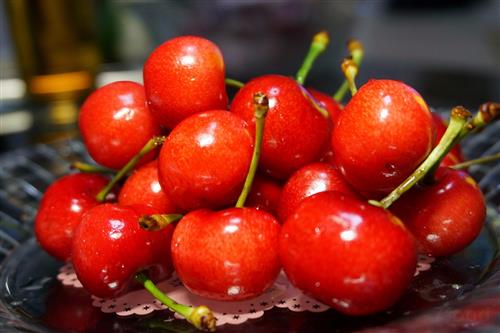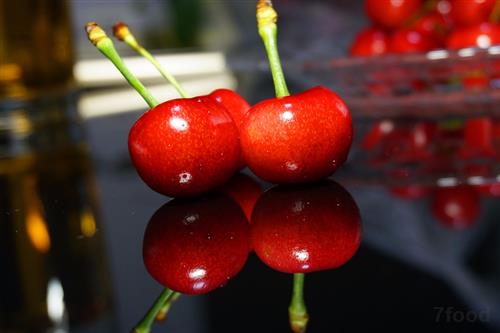Winter is the season when cherry is mass-marketed. Especially before the Spring Festival, many people will purchase cherry gift boxes as gifts for friends and family. Cherries are also known as cherries. They are distributed all over the world. They have intelligence. The United States, Canada, and China also have a lot of cherries, such as Anhui, Zhejiang, Gansu, Sichuan, Shandong, Jiangsu, Henan, and Shaanxi.
Chery is a transliteration of the English word cherry, which was literally translated as "cherry" in Taiwan, Guangdong, and Hong Kong. However, it does not refer to a small, thin red Chinese cherry, but rather a large, imported cherry produced in countries such as the United States, Canada, and Chile. China currently also has introduction of cherry fruit trees, but it has not yet formed scale.
Cherries are actually cherries. The "cherry" is a Cantonese translation of the English name "cherry". But the commonly known cherry and cherry in the market are two different varieties.

We generally say that small cherries are Chinese cherries and they are widely distributed in China.
Big Cherry is a cherry, also known as the American cherry, mostly referring to imported fruits. Of course, it was also planted in China in the 1990s. It is mainly distributed in Shandong, and there are also a small amount of cultivation in central provinces such as Beijing, Liaoning and Shanxi.

Diamonds in Fruit - Cherries
The largest producer of American cherry is Bin Ying (Bing), followed by Lam-bort. They are all dark red. The fruits are huge, firm and juicy, the entrance is sweet, and Rainier is pale— - Cream color is almost yellow, slightly pink and moist, delicate flesh, color clear, juice colorless, sweet and delicious entrance, sweet and delicate. Bin Ying and Lin Bao are different. They are produced in the northwestern United States. The cherry is a diamond in fruit. It is not only delicious, but it is also eaten regularly to prevent cancer, especially those who are nervous because of job stress.
The origin of the sweet and delicious cherry has always been traced back to the Asiatic Stone Age. They were distributed throughout prehistoric continental Europe and were brought to the Americas from the sea by early immigration vessels in 1692. The current U.S. Northwestern cherry production started in 1847. Its main varieties are Bing, Lambort and Rainier, which account for more than 90% of U.S. cherry production in the United States.
At present, the United States is in a leading position in the production of cherries all over the world, and more than 70% of American cherries come from the northwest. From the perspective of the entire world, the production industry of the cherry fruit is not a sunrise industry, but the production of the cherry tomatoes in the northwestern United States has maintained a sustained growth. In China, a few years ago, the American cherry was still very rare. Today, the sales volume of US cherries grows at an annual rate of over 50%. The U.S. northwestern cherry wares imported to China last year accounted for 100,000 boxes (about 9,000 grams per carton).
Cherries are summer food. The Northwestern U.S. cherry is one of the few truly seasonal fruits. It only produces in mid-June each year, and by mid-August, in addition to a small amount of products in the high mountains, the U.S. Northwestern Cherry has completed its mission of providing summer food for people, waiting for the next year to make you feel good again. .
What should you watch out for when eating cherries normally?
1 not suitable for fasting
Cherries are not suitable for fasting. It should be said that fruits with more pectin content should not be eaten on an empty stomach. When fasting, fruits with more pectin are used. Pectin will combine with stomach acid to form conjugates that are difficult to decompose. This can cause problems such as stomach indigestion or diarrhea.
2. Not fresh cherries are unfit for human consumption
Because cherry is a berry food, the nutritional value of fresh cherry is high, especially the deeper the cherry peel color, which means that the higher the content of anthocyanins, the anthocyanins are very good antioxidants that can eliminate the body's Free radicals, anti-aging, and flamboyant cherries indicate that they are not fresh and may have deteriorated, so they are unfit for human consumption.
3. Cherry poisoning
Finally, I will briefly talk about some people saying that eating large quantities of cherries may cause poisoning. The so-called cherry poisoning refers to the seeds of cherries. That is, the cherry nucleus contains a substance called cyanogenic glycosides, and cyanogenic glycosides themselves are non-toxic. , But after being ingested by the human body, it reacts with the acid and enzymes in the body to form hydrocyanic acid, toxic hydrocyanic acid. After introducing the principle of cyanogenic acid poisoning, let's look at the place containing cyanogenic glucosides in the cherry nucleus. It is not distributed on the surface of the cherry nucleus. It does not mean that the cherry nucleus will ingest cyanoside, cyanide The glycoside is inside the cherry nucleus, that is, after breaking down the hard shell of the cherry nucleus, the material inside contains cyanogenic glycosides. First of all, the cyanodine content in the crushed shell is not to say that ordinary people will not eat cherries. Also very low, in order to achieve the degree of poisoning, at least eat four or five pounds of cherry nucleus, so the amount of daily consumption of cherries will not be poisoned.